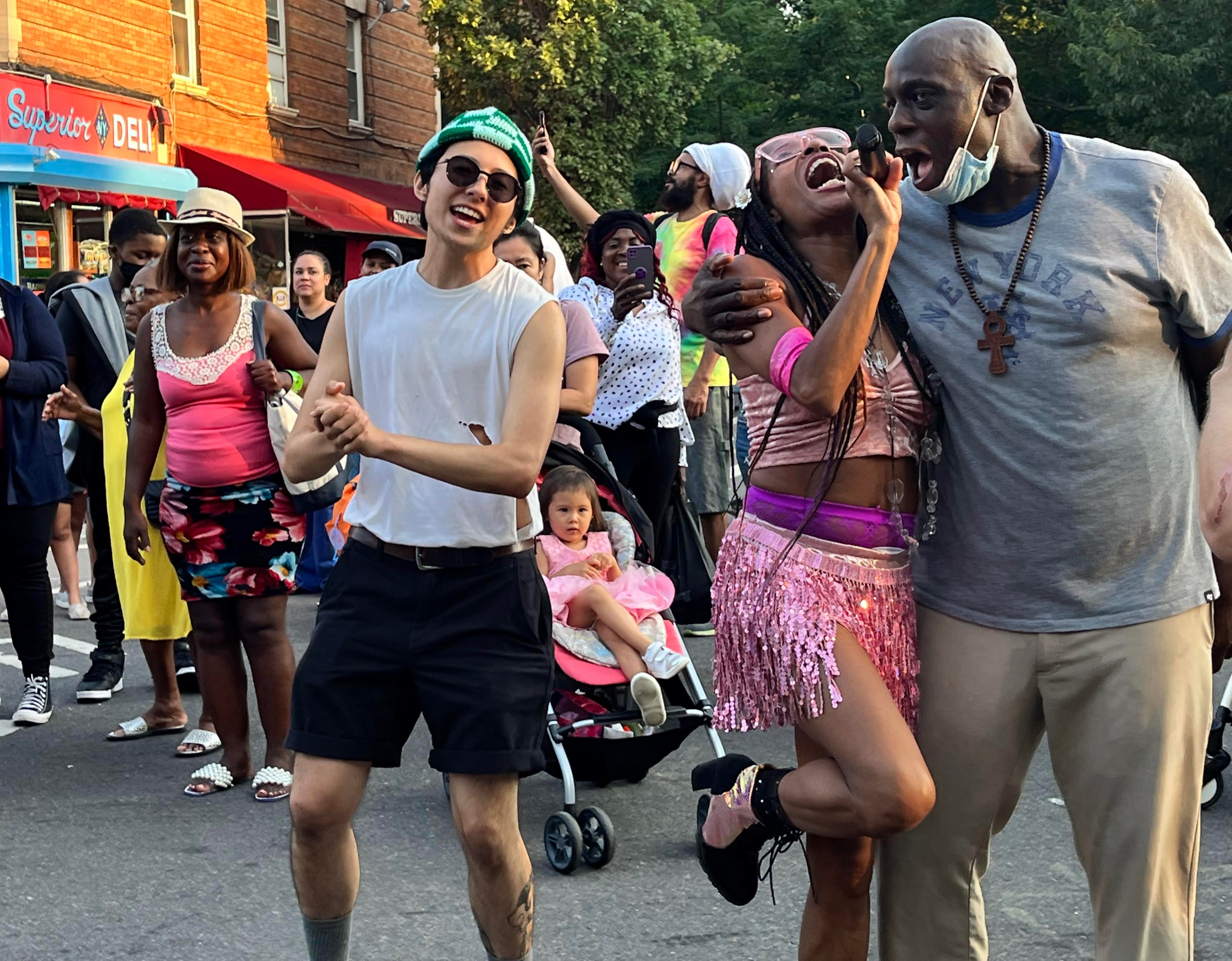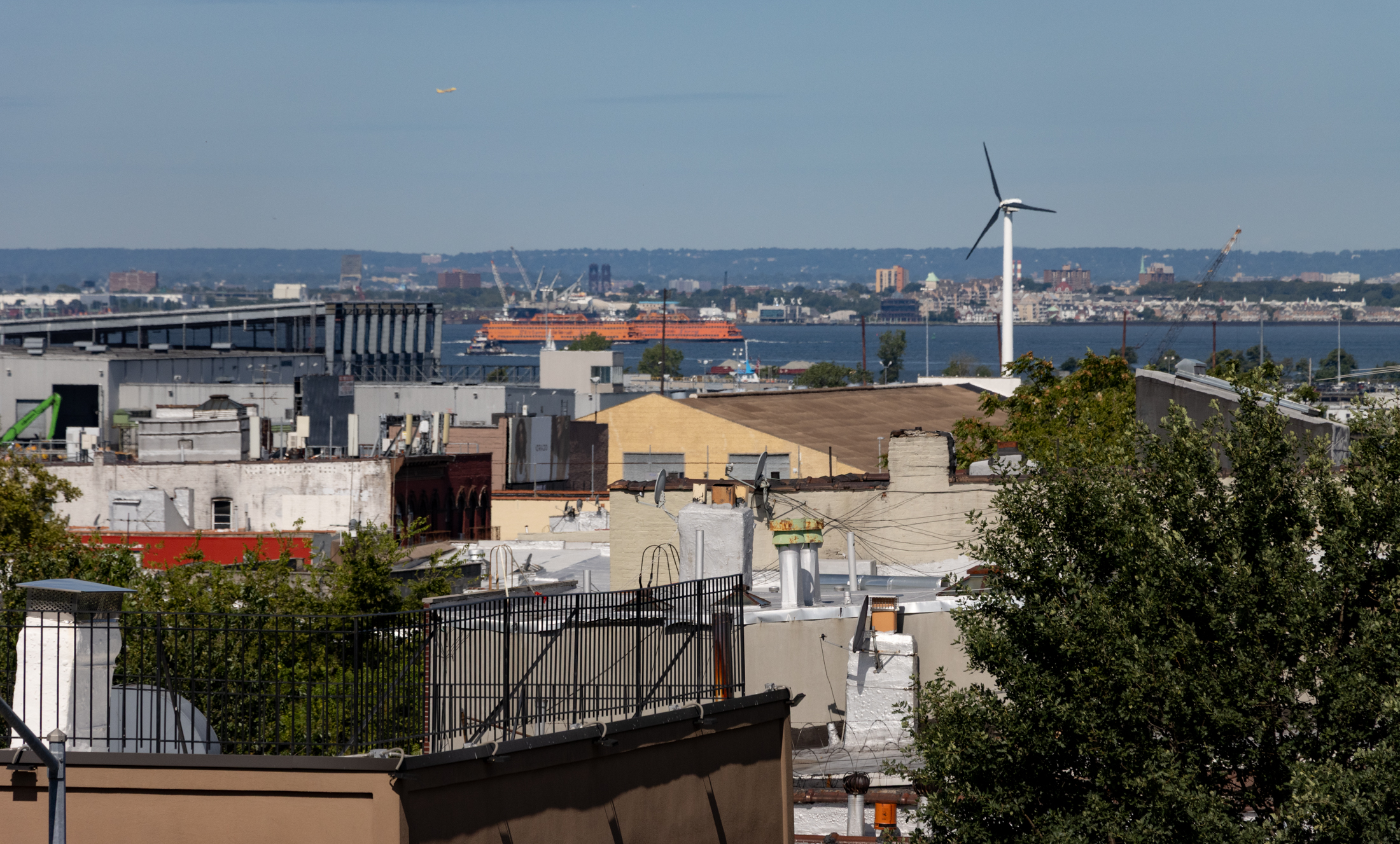4th Avenue Floods Again
The recent rains were too much for the drainage systems of 4th Avenue, it seems. According to these photos from the Facebook page of the Root Hill Cafe, which is at the corner of Carroll Street, the flooding took out the entire intersection and much of Carroll Street going down towards the canal. Based upon…





The recent rains were too much for the drainage systems of 4th Avenue, it seems. According to these photos from the Facebook page of the Root Hill Cafe, which is at the corner of Carroll Street, the flooding took out the entire intersection and much of Carroll Street going down towards the canal. Based upon the comments, it sounds like this isn’t the first time this spot has been hit either. You can click on any of the photos above to expand or go to the jump to see a video of the same scene.





has anyone been by here today? i parked on 4th ave btw union and president last night and there was no sign of flooding. hope the car’s ok!
Benson is correct, its backup of the sewer, not the backup of Gowanus. And that is why there is flooding in people’s homes up the slope. The pipes flatten out at each avenue to avoid having them too deep at the end of the line, so the carrying capacity drops and some the pipes can’t accept new stormwater. The treatment plants can’t handle the flow, so until the detention facility planned for the Gowanus is built, the combined sewers discharge raw sewage and storm water via combined sewer outfalls into the Gowanus canal and other locations all over the city.
One of the reasons Park Slope/Gowanus has probably seen an increase in overflows over the years is the pipes were built years ago, and all new construction projects are supposed to detain stormwater so that flows to the old sewers don’t exceed the flows they were designed for. But the neighborhood has gotten much more impervious over time, as people build extensions, pave over their backyard, etc, and probably didn’t increase detention to accommodate. At the same time, a lot of buildings probably predate the drainage plans, and when they get replaced by new buildings but don’t increase the amount of impervious area, they might not be bypassing building detention they should have had all along. The flows seen last night did not exceed what the DEP designed the pipes to convey, so the increase in impervious area or clogging in the pipes themselves result in flooding. However, if it was high tide, there could also have been some backflow into the sewer pipes to prevent sewer overflows from flowing as freely.
To reference a few sites regarding sewer overflows into the river and the clean water act:
http://www.worldchanging.com/archives/006679.html
“DEP is legally bound by the mandates of the federal Clean Water Act to eliminate 85 percent of sewer overflows before they become water quality issues. To date, the DEP has approached this primarily through end-of-pipe solutions: building massive sewage/stormwater storage facilities to contain the untreated water during storms, and slowly drain that water back into the sewer system as treatment capacity becomes available. The Long-Term Control Plans will determine how DEP moves forward in fulfilling its Clean Water Act obligations, but plans thus far have failed to integrate the most innovative and beneficial stormwater management practices, which involve dealing with stormwater before it enters the sewer.”
Eliminating 85% of sewer overlfows surely sounds like they can’t just dump excess it into the river anymore to me.
Just to be sure on NYC’s own site:
http://www.nyc.gov/html/dep/pdf/wwsystem.pdf
“In 1972, the federal government passed the Clean Water Act
(CWA). It dictated minimum standards for wastewater
treatment plants throughout the country. That meant that
plants had to be upgraded to secondary treatment, which
removed up to 85 percent of pollutants.”
I Agree the system is antiquated and combined sewers need to be seperated. Actually the city of NY is working on fixing just that (in about 30 years):
http://www.nyc.gov/html/planyc2030/downloads/pdf/draft_sustainable_stormwater_management_plan_october_2008.pdf
I especially like the last sentence from Paragraph two from the executive summary, you’ll notice the “Flood Relief” is last on the list slated with “Over Time”.
Even the CIty’s own web site acknowledges they try to avoid this:
http://www.nyc.gov/html/dep/html/harbor_water/combined_sewer_overflow.shtml
“In some New York City neighborhoods, runoff from the streets is carried by separate storm sewers directly to local streams, rivers and bays. In most areas of the City, sanitary and industrial wastewater, rainwater and street runoff are collected in the same sewers and then conveyed together to the City’s treatment plants. This is known as a combined sewer system. Approximately 70 percent of the City sewers are combined. Sometimes, during heavy rains or snow, combined sewers fill to capacity and are unable to carry the combined sanitary and storm sewage to the plants. When this occurs, the mix of excess storm water and untreated sewage flows directly into the City’s waterways. This is called a combined sewer overflow (CSO).
During heavy rain and snow storms, combined sewers can potentially reach higher than normal capacities. Treatment plants are unable to handle these high capacities and when this occurs, a mix of excess stormwater and untreated wastewater, a CSO, discharges directly into the City’s waterways. CSOs are a concern because they can increase the number of harmful bacteria and pollutants being released into our open waters. CSOs also carry trash, litter and toxic chemicals from the streets.”
I have no issue with not dumping pollutants. Just don’t back them up into my house because enough capacity doesn’t exist. I’d prefer it the river than my basement.
waterfront property commands a premium. I bet this was orchestrated by local landowners.
hmm… thats odd…
this corner didnt flood during the bigger weekend storms when one would have expected the unwashed street debris to clog everything. It did flood one block north. But it did flood the day after a backhoe was ripping up the street.
The issue is, and has been for 100 years…
If the city doesn’t regularly clean the catch basins it floods on storms like this. If the do clean regularly a larger burst is needed to flood the area.
I have seen photos of horses up to their chests in water at this corner.
“Oh, to live in such a time and have leaders wise enough to take advantage of it! ”
And, to live in a place where people living there would allow it to happen, who wouldn’t complain about the noise and dirt that it would create, and wouldn’t sue for a ULURP, an environmental impact statement, community board approval, and geese impact statement. Save the rats!
“What the city needs is separate storm and sewer systems…which most newer cities have. Separating them will cost a fortune.”
If only we were living in a time of a massive recession, when unprecedentedly low interest rates made it possible for the government to borrow money to finance vital capital projects practically for free. And if only we were living in a time of mass unemployment and a huge percentage of private sector capacity sitting idle, where these projects not only would fail to compete with private investment dollars, but would also actually stimulate the private sector by putting idle capacity to work and putting money in workers’ pockets.
Oh, to live in such a time and have leaders wise enough to take advantage of it!
ou812 —
Benson is correct above. The Clean Water Act DOES NOT require treatment of stormwater the way you characterize it. And he is absolutely correct that the NYC sewer system problems are related to the combined sewer system. It’s antiquated and ridiculous.
I think it’s perfectly reasonable to expect the city to provide sufficient drainage to prevent small-scale flooding like this. As I said, the only reason this type of thing occurs here is insufficient city infrastructure – little to do with the geographic location. Corners, including more elevated ones, flood all over the city due to insufficient drainage. As for the area being at high-risk for “disaster”, I think that’s getting a little carried away. Again, you still seem to be confusing this localized drainage problem with an indication that this is a frequent flood zone. This area is about 12-15 ft. above sea level. Not that high, but actually higher than many coastal neighborhoods in the tri-state area. It would take a real natural disaster like a stray hurricane for large-scale flooding to occur here. And I’m not sure why you think private developers or property owners who suffered damage in such a case would receive public money – they would receive insurance if they had policies, but that’s it.